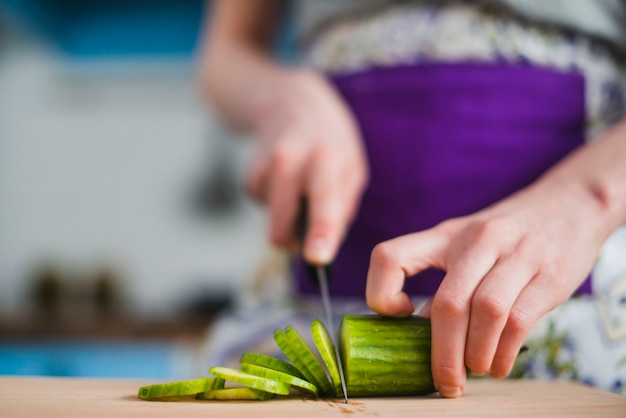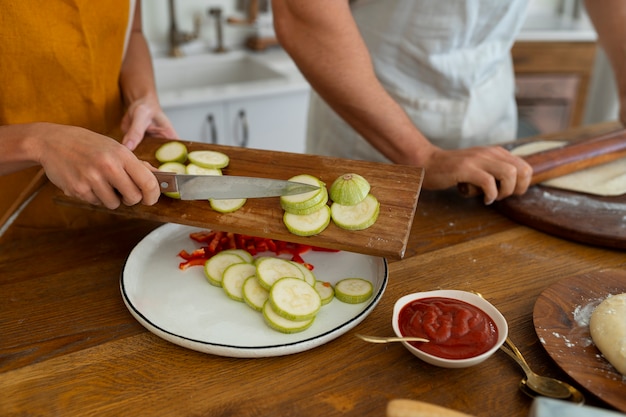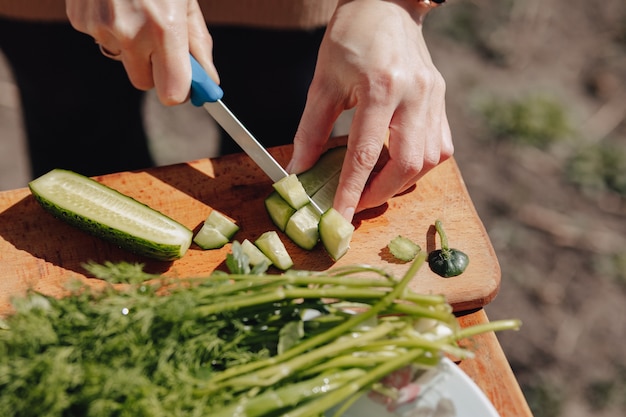Oh, leeks. These long, slender, green and white beauties are often relegated to a supporting role in soups and stews, but they deserve so much more! They’re incredibly versatile, with a subtle sweetness and a gentle, earthy flavour that elevates countless dishes. For years now, I’ve been exploring the magic of leeks in the kitchen, and let me tell you, I've learned a thing or two. So, grab your apron, a bunch of leeks, and let's embark on this delicious journey together!
(Part 1) Picking the Perfect Leeks

Just like any other ingredient, the foundation for delicious leeks starts with choosing the right ones. Don’t worry, it's not rocket science, but there are a few pointers to keep in mind.
Choosing the Right Size and Shape
When picking leeks, size matters! You’ll want to aim for leeks that are about 1 inch in diameter. These will cook evenly, and you won’t end up with some parts overcooked and others raw. For recipes requiring more substantial chunks, like a leek and potato soup, you can go for slightly larger leeks. But for most dishes, those medium-sized leeks are your best bet.
Checking for Freshness
Freshness is key! Look for leeks with firm, bright green tops. Avoid any that have wilted, yellowed, or mushy leaves. Give them a gentle squeeze – they should feel firm and springy, not soft or limp. A good rule of thumb is to choose leeks that have a good amount of white and light green. This signifies that they've been growing in good conditions, which usually translates to more flavour for you.
(Part 2) Preparing the Leeks: A Cleaning Ritual

Ah, the cleaning process. It’s the most crucial step in preparing leeks, and it's where many people tend to lose their enthusiasm. But I promise, it's not as daunting as it seems! The key is to be thorough and patient.
Washing Away the Grit
Leeks have a tendency to hold onto dirt and grit, like they’re clinging to their life force. You’ll need to give them a good scrubbing to make sure they’re clean before they even think about going into your pan. Here’s how I do it:
- Cut off the root end: This is where most of the dirt collects. Discard it and you’ll be well on your way to a cleaner leek.
- Slice lengthwise: Cut the leek in half or thirds, depending on its size, from root to tip. This makes it easier to access the layers and remove any hiding dirt.
- Wash thoroughly: Run the leeks under cold water, separating the layers and rinsing each one carefully. You want to make sure there's no lingering grit, even between the layers. You can also soak them in a bowl of cold water for a few minutes, then gently swirl them around to loosen any stubborn dirt.
Slicing and Dicing: Getting Ready for Cooking
With the leeks squeaky clean, it's time to slice or dice them, depending on the recipe. Thin slices are perfect for soups and stews, where they can simmer gently and release their flavour. Diced leeks work well in stir-fries and sautéed dishes, where they can cook quickly and add a burst of flavour. The smaller you cut them, the faster they will cook. So, keep that in mind!
(Part 3) Cooking Leeks: A Masterclass in Flavour

Now we’re getting to the good part, the actual cooking! Leeks are incredibly adaptable, and there are so many ways to coax out their deliciousness. Let’s explore some of the most popular methods.
Sautéing Leeks: A Simple Yet Delicious Approach
Sautéing leeks is a classic for a reason. It’s incredibly simple, yet it brings out their natural sweetness and creates a delicious foundation for all sorts of dishes. Here’s how I do it:
- Heat the pan: Get a good-sized skillet nice and hot over medium heat. A little butter or oil will help them brown and caramelize.
- Add the leeks: Carefully add the sliced or diced leeks to the hot pan. Make sure the pan is big enough to allow them to spread out evenly. Don’t overcrowd the pan, or they’ll steam instead of sauté.
- Cook until softened: Cook the leeks, stirring occasionally, until they're softened and slightly translucent, about 5-7 minutes. They should have a beautiful golden colour, but not be brown or burnt.
Braising Leeks: Slow and Low for Maximum Flavour
If you’re looking to unleash the full potential of leeks, try braising them. This slow-cooking method allows them to become incredibly tender and release all of their deliciousness. Here's how to do it:
- Sauté first: Start by sautéing the leeks in a pan with a bit of butter or oil, just like we did before.
- Add liquid: Pour in your chosen liquid – broth, wine, or even water – and bring it to a simmer. The liquid should be about halfway up the leeks.
- Cover and simmer: Cover the pan and cook over low heat for 30 minutes to an hour, or until the leeks are tender and cooked through. The exact time will depend on the thickness of the leeks and the type of liquid used.
Roasting Leeks: A Touch of Caramelized Magic
Roasting is another excellent way to bring out the best in leeks. It adds a delightful caramelized flavour and creates a tender, melt-in-your-mouth texture.
- Prepare the leeks: Cut the leeks into thick slices or wedges.
- Toss with olive oil: In a bowl, toss the leek slices with olive oil, salt, and pepper. You can also add herbs like thyme or rosemary if you like.
- Roast in the oven: Spread the leeks in a single layer on a baking sheet and roast in a preheated oven at 400 degrees Fahrenheit for about 20 minutes, or until they are tender and lightly caramelized.
(Part 4) Leeks in Soups and Stews: Comforting Classics
When it comes to soups and stews, leeks are absolute stars. Their subtle sweetness and mild flavour create a delicious base for countless comforting recipes.
leek and potato soup: A Timeless Delight
This classic combination is a true comfort food. It's so simple to make, and it's always a crowd-pleaser. I have my own little twists on the recipe, but here’s a basic version that you can use as a starting point:
Ingredients:
- 1 tablespoon olive oil
- 2 large leeks, chopped
- 2 pounds potatoes, peeled and cubed
- 4 cups chicken or vegetable broth
- Salt and pepper to taste
- Fresh thyme (optional)
Instructions:
1. In a large pot or dutch oven, heat the olive oil over medium heat. Add the chopped leeks and sauté until softened, about 5 minutes.
2. Add the cubed potatoes and broth. Bring to a boil, then reduce heat and simmer for about 20 minutes, or until the potatoes are tender.
3. Season with salt and pepper, and add fresh thyme if desired.
4. Use an immersion blender or transfer the soup to a regular blender to purée until smooth.
5. Serve hot and enjoy!
leek and sausage stew: Hearty and Satisfying
This stew is perfect for a cold winter day. The smoky flavour of the sausage pairs beautifully with the sweetness of the leeks, creating a symphony of flavour in your bowl.
Ingredients:
- 1 tablespoon olive oil
- 1 pound italian sausage, removed from casings
- 2 large leeks, chopped
- 1 cup diced carrots
- 1 cup diced potatoes
- 4 cups beef broth
- 1/2 cup chopped fresh parsley
- Salt and pepper to taste
Instructions:
1. In a large pot or Dutch oven, heat the olive oil over medium heat. Add the sausage and cook until browned.
2. Add the leeks, carrots, and potatoes. Cook until softened, about 5 minutes.
3. Pour in the beef broth and bring to a boil. Reduce heat and simmer for about 30 minutes, or until the vegetables are tender.
4. Stir in the parsley and season with salt and pepper.
5. Serve hot and enjoy!
(Part 5) Leeks in Savoury Dishes: Beyond Soups and Stews
Leeks are far from one-trick ponies. They can add a touch of elegance and flavour to a range of savoury dishes.
Leeks in Quiches and Tarts: A Touch of Refined Flavour
Adding leeks to a quiche or tart is a classic move, and for good reason! Their mild sweetness pairs perfectly with the savoury filling, creating a delightful contrast.
You can slice them thinly and add them to the filling, or even use them as a base for the pastry, creating a beautiful, layered texture.
Leeks in pasta dishes: A Simple but Exquisite Addition
Leeks can elevate even the simplest pasta dishes. They can be sautéed with garlic and olive oil and added to a simple tomato sauce, or used as a base for a creamy carbonara sauce. Their subtle sweetness balances out the richness of the cheese and creates a truly memorable dish.
Leeks in Risotto: A Creamy and Aromatic Delight
Leeks are a perfect match for risotto. Their sweetness and mild flavour complement the creamy rice beautifully, adding a touch of elegance and depth. Add the chopped leeks to the risotto along with the onions, and cook them until they are softened. Then continue with your usual risotto recipe, and you’ll be amazed by the results.
(Part 6) Leeks in Other Dishes: Exploring New Horizons
Leeks aren’t confined to savoury dishes! They can even add a touch of sweetness and complexity to sweet dishes.
Leeks in Tartlets and Galettes: A Sweet and Savoury Fusion
Leeks can be used to make a sweet and savoury tartlet or galette. Imagine caramelized leeks paired with salty cheese, like a creamy goat cheese, topped with a drizzle of honey. It’s a delightful fusion of sweet and savoury, a true culinary masterpiece. You can also add other fruits or berries to the mix, such as apples, pears, or blueberries, to create a symphony of textures and flavours.
Leeks in Frittatas: A Versatile Breakfast or Brunch Option
Leeks are perfect for adding to frittatas. Just sauté some leeks with garlic and add them to the egg mixture before cooking. It's so easy and delicious. I like to add some fresh herbs like parsley or chives as well for extra flavour. Serve them hot for a hearty breakfast or a satisfying brunch.
Leeks in Breakfast Dishes: A Touch of Elegance
Leeks can even be a star in breakfast dishes. They can be sautéed and added to scrambled eggs or omelets, or even used to make a delicious leek and potato hash. Their mild flavour and subtle sweetness complement the other breakfast ingredients beautifully.
(Part 7) Mastering the Art of Cooking Leeks: Useful Tips and Tricks
Now that you have a good understanding of how to cook leeks, let’s delve into some tips and tricks that will help you take your leek game to the next level.
Storing Leeks: Keeping Them Fresh
The best way to store leeks is to wrap them in plastic wrap or a damp paper towel and place them in the refrigerator. They should last for up to a week if stored properly. You can also freeze leeks by blanching them first. To blanch them, simply boil them for a few minutes, then plunge them into ice water to stop the cooking process. Drain well and freeze in an airtight container. Frozen leeks can be used in soups, stews, and other dishes.
Substitutes for Leeks: When You Need an Alternative
If you can't find leeks, or simply don't have any on hand, there are a few substitutes you can use. Onions are a good choice, as they have a similar flavour, although they are a bit more pungent. You can also use scallions or shallots, but these will have a slightly different flavour. Remember, the best substitute really depends on the dish you're making.
The Importance of Patience: Slow and Steady Wins the Race
When cooking leeks, patience is key. They need to be cooked slowly and gently to bring out their sweetness and tenderness. Avoid overcooking them, or they will become mushy and lose their flavour.
Don't Forget to Season: Amplifying the Flavour
Leeks themselves are quite mild, so it's important to season them well. Salt and pepper are essential, but you can also add other herbs and spices to taste. Try adding a pinch of nutmeg, thyme, or even a touch of chili flakes for a bit of heat. Experiment with different flavours and discover your own personal favourites.
(Part 8) FAQs: Answering Your Burning Questions
1. What's the best way to remove the dirt from leeks?
The best way to clean leeks is to cut them lengthwise and wash them thoroughly under running cold water, separating the layers and rinsing each one individually. You can also soak them in a bowl of cold water for a few minutes, then gently swish them around to loosen any grit.
2. Can I use leeks in place of onions in a recipe?
You can use leeks in place of onions in many recipes, but they do have a slightly different flavour profile. Leeks are milder and sweeter than onions, so you may need to adjust the seasoning accordingly. You might want to add a bit more salt or pepper to compensate for the milder flavour.
3. How long do leeks take to cook?
The cooking time for leeks depends on the method you are using. Sautéed leeks will cook in about 5 minutes, while braised leeks may take 30 minutes to an hour. roasted leeks typically take about 20 minutes. Keep an eye on them and adjust the cooking time based on their size and the heat of your oven.
4. What are some creative ways to use leeks?
Leeks can be used in a variety of creative ways, from adding them to frittatas and quiches to using them to make a delicious leek and potato hash. You can also use them to make a sweet and savory tartlet or galette. They're perfect for adding depth and complexity to both savoury and sweet dishes.
5. Can I freeze leeks?
Yes, you can freeze leeks. Blanch them first by boiling them for a few minutes, then plunge them into ice water to stop the cooking process. Drain well and freeze in an airtight container. Frozen leeks can be used in soups, stews, and other dishes. Just remember to thaw them before adding them to your recipe.
(Part 9) Conclusion: Embrace the World of Leeks
There you have it, my guide to mastering the art of cooking leeks. From choosing the right leeks to cleaning and cooking them perfectly, I've shared all my tips and tricks. Now, go forth and experiment with these delicious vegetables!
Don’t be afraid to get creative in the kitchen and try different recipes. The possibilities are endless. And remember, the best way to become a leek master is to practice, practice, practice!
Happy cooking!
Everyone is watching

Corn on the Cob: The Ultimate Guide to Perfectly Cooked Ears
Healthy MealsAh, corn on the cob. Just the name evokes images of sunny days, barbecues, and that sweet, juicy flavour that ...

Perfect Pork Roast Oven Cooking Time: A Guide to Delicious Results
Healthy MealsThere's something truly satisfying about a perfectly roasted pork. The aroma alone is enough to make your mout...

Ham Cooking Time: How Long to Bake, Smoke, or Boil a Delicious Ham
Healthy MealsAh, ham. It's a classic, isn't it? A real crowd-pleaser, especially around holidays. And when done right, it'...

Scallops: The Ultimate Guide to Perfect Cooking
Healthy MealsAh, scallops. Those delicate, sweet, and utterly delicious morsels of the sea. They hold a special place in my...

Spaghetti Squash: The Ultimate Guide to Cooking and Serving
Healthy MealsRemember that time you saw spaghetti squash at the supermarket, looking all bumpy and strange, and thought, "W...
